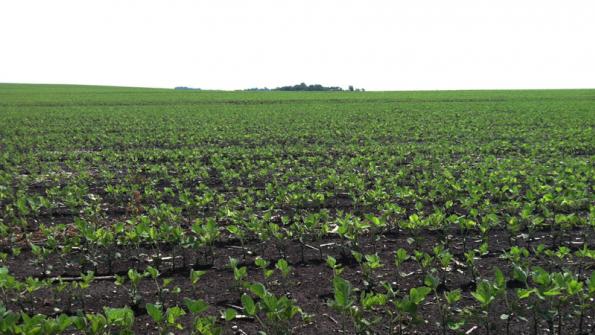June 30, 2016

Almost all postemergence soybean herbicides have a preharvest interval or a soybean developmental stage beyond which applications cannot be made specified on their respective label. Labels of some products may indicate both a developmental stage (before soybean bloom, for example) and a preharvest interval. Preharvest intervals indicate the amount of time that must elapse between the herbicide application and crop harvest. Failure to observe the preharvest interval may result in herbicide residue levels in the crop in excess of established limits. Aaron Hager at University of Illinois has gathered soybean herbicide application information regarding preharvest intervals.
Herbicide | Preharvest Interval/Maximum Soybean Growth Stage |
Assure II/Targa | 80 days |
Anthem Maxx/Cadet | 60 days |
Basagran | No interval on label |
Classic | 60 days |
Cobra/Phoenix | 45 days/do not apply after R6 |
Dual Magnum1/Dual II Magnum1 | 90 days/through third trifoliolate |
Enlist Duo | Do not apply after R2 |
Extreme/Tackle | 85 days |
FirstRate | Apply prior to R2 |
Flexstar/Rhythm | 45 days |
Flexstar GT | 45 days |
Fusilade DX | 60 days |
Fusion | Prebloom |
Liberty/Interline/Cheetah/Cheetah Max | 70 days |
Roundup PowerMax2 | Broadcast: through R2 Harvest aid: 14 days |
Harmony SG | 60 days |
Marvel | 60 days |
Outlook1 | 5th trifoliolate |
Poast/Poast Plus | 75 days |
Prefix/Vise | 90 days |
Pursuit | 85 days |
Raptor | Prebloom |
Resource | 60 days |
Select or SelectMax | 60 days |
Storm | 50 days |
Synchrony XP | 60 days |
Torment | 85 days |
Ultra Blazer | 50 days |
Warrant1/Warrant Ultra | Before R2 |
Zidua1 | 3rd trifoliolate |
1 These products will not control emerged weeds but can be applied postemergence for soil-residual weed control.
2 Data, taken from the Roundup PowerMax label, are for broadcast applications in glyphosate-resistant soybean varieties. Intervals change for applications (spot treatment and preharvest) made to non-glyphosate-resistant soybean varieties.
You May Also Like




